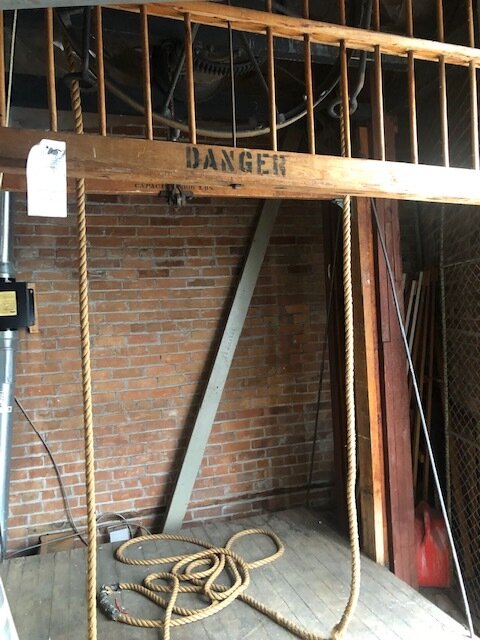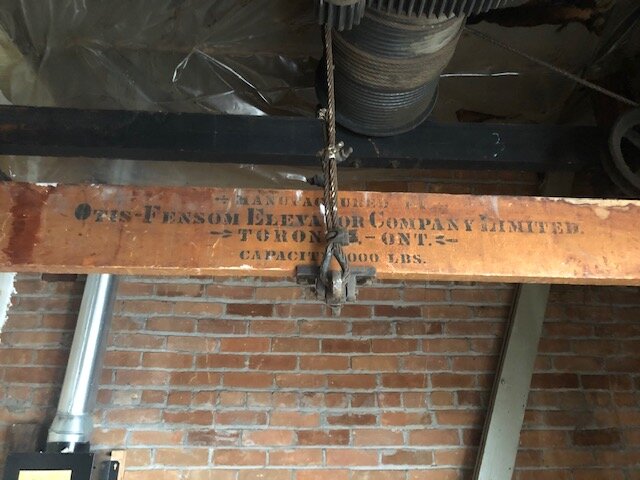Otis-Fensom Hand-Powered (Pull Rope) Elevator
Otis-Fensom Elevator Crosshead
Recently our team was contacted to inspect a 19th century building where the new owner had found a hand-powered (pull-rope) elevator. Completely in tact and fully preserved complete with original rope and pulley, platform and counterweight system along with painted on data tags, it was immediately identified as an Otis-Fensom Elevator from the 1890’s.
By the end of the 19th century, Toronto had grown rapidly into an industrial and urbanized hub alongside its neighbours Hamilton and Montreal. Marked by the Toronto Industrial Exhibition in 1879, the region had fully entered its industrial era with factories and buildings increasingly getting larger and taller. During this period soft industry like garment production and textile manufacturing began adopting advanced equipment and new technologies such as lifts to move freight throughout the manufacturing floors to aid with the rapidly growing market.
Workers and machines were brought together in a single factory building specially designed to handle the flow of materials. Multi-story buildings were common because they facilitated transmission of power and goods through line shafts with different operations being done on different floors.
Industry at this time relied on man or steam power with electricity only first coming to Toronto in the late 1880s, and in limited quantities supplied by very few private companies. It wouldn’t be until 1908, when Torontonians would vote overwhelmingly for the formation of a municipal electricity company to supply the entire city with the quickly growing convenience.
So when this building was erected and in use as an industrial facility, workers would have had to manually transport goods throughout the building. These could include raw materials for manufacturing, barrels of oil for lamps, gas for heating, lubricants for the machinery and finally the transferring of finished goods for delivery. Here is where the hand-powered lift would have been an essential component within the buildings complex system.
Otis Fensom Hand Powered Elevator Platform, Rope and Pulley
The hand powered, manually operated elevator uses a traditional rope and pulley system. First the platform is framed with two vertical slings made rigid by a reinforced crosshead above. Then an endless 1-1/8 inch hoist cable is roped from the crosshead and around an iron pulley and drum, along with a series of gears, then extended down to the counterweight located below.
The counterweights are heavy iron plates that help to offset the weight of the operator and the load typically calculated at 40% of the maximum capacity allowing for a balanced and easy operation. A primary brake keeps the elevator from rising from the weight of the counter weights, when it is not in use. Pulling on one rope releases that brake, the other rope sets it.
Workers would be required to raise and lower the elevator hundreds of times each day loading trucks and unloading train cars. To go up, the operator of the lift would stand on the platform of the car and pull on one side of the rope. To go down he would pull on the opposite side. The system works extremely well and could be raised or lowered using very little effort. Lastly, the famous Otis Safety Brake automatically grasps the wooden vertical rails if the hoist cable was ever to break ensuring the passenger and load remains safe without falling into the pit.
All safe gentlemen, all safe.












